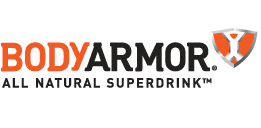Music has
been played throughout American history during political events, to rouse emotion and stir patriotism.
However, as
intellectual property laws evolve along with the culture of politics, several issues have risen to the forefront along with the ongoing rancor between the permanent residents of Hollywood/Nashville
and Washington D.C. As we have previously discussed, Presidential candidates are frequent targets of musicians' ire for using their songs at political rallies.
Most recently, R.E.M. objected to Fox News' use of "Losing My Religion" during coverage of the 2012 Democratic National Convention. The pro-Democratic band argues that the use of the song falsely conveyed that it agreed with the conservative networks' critique of the DNC as secularist, stating:
Most recently, R.E.M. objected to Fox News' use of "Losing My Religion" during coverage of the 2012 Democratic National Convention. The pro-Democratic band argues that the use of the song falsely conveyed that it agreed with the conservative networks' critique of the DNC as secularist, stating:
 |
| REM in Concert / Wikimedia Commons / Flickr user Stark (Stefano Andreoli) |
Michael Stipe added,
"We have little or no respect for their puff adder brand of reportage. Our
music does not belong there."
The
intellectual property issues break down along relatively clear legal lines.
Copyright:
A songwriter possesses copyright to the lyrics and melody of a song.
Additionally, performers of the song possess independent copyrights in their
recordings of those songs. Both of these copyrights are licensed to the public
through performance rights organizations, such as ASCAP and BMI. Most large
public venues, such as sports arenas and convention halls, purchase
"blanket" licenses from ASCAP and BMI, that permit them to publicly
perform any of the songs contained in their catalogs. (The songwriters
and performers each get a cut of the revenue collected through a separate
agreement with the performance rights organizations).
For
example, at a baseball game, you may hear the choruses of Queen's "We Will
Rock You," Twisted Sisters' "We're Not Gonna Take It" and other
rousing anthems repeatedly. The stadium or sports arena has typically
paid a recurring license fee to publicly perform these and other songs within
their arenas during events, without many restrictions. Twisted Sister then
regularly gets a check from ASCAP/BMI.
However,
occasionally, there is a technical copyright violation. For example, if the
baseball game is broadcast on national television and the song is heard in the
background, the musicians may argue that the license agreement did not cover
the "synchronization rights" required for television broadcast
(although other license agreements may cover this contingency).
Trademark/Right
of Publicity/Implied Endorsement: In the context of political conventions
that occur within the licensed arenas, however, things get trickier.
While a public arena may possess a paid-up license to publicly perform
the music under their ASCAP/BMI terms without violating songwriters' or
performers' copyrights, some musicians object to their songs' use during
political events on separate legal grounds. Specifically, they argue that
the politicians' use of the songs during political events in those arenas
nonetheless falsely implies endorsement and sponsorship.
As previously noted, there have been a number of lawsuits filed on these grounds against candidates in both political parties.
ASCAP has issued a helpful summary of the law warning politicians to be aware that their public performance licenses do NOT guard against the Trademark/Right of Publicity/Implied Endorsement theories.
It is
this authors' personal view that such alternative theories may have legal
merit, depending on the facts.
For
example, let's assume that a musician can prove in court that consumers (a/k/a
voters) recognize a particular song as a form of source identification.
 That is,
if we assume that a performer can prove that the public immediately perceives a
song as having direct associations with the composer and/or the band that
performed the song (especially ones that are politically active and highly
visible), then the song may be able to function as a trademark.
That is,
if we assume that a performer can prove that the public immediately perceives a
song as having direct associations with the composer and/or the band that
performed the song (especially ones that are politically active and highly
visible), then the song may be able to function as a trademark.
Further,
if a plaintiff can then prove that a politicians' use of that song is likely
to confuse a sufficient percentage of the public into believing that the
songwriter/band has endorsed that politician or his/her political party's
views, then that plaintiff can demonstrate all that he needs to satisfy a court
that there is a likelihood of confusion and irreparable harm to his brand.
On the
other hand, if the public is savvy enough to assume that the use of a song
during a political event does not necessarily reflect the endorsement or
approval of the songs' writers or performers and is not likely to be confused, the Plaintiff would not be able to satisfy his burden of proof, and would lose in court.
Finally, the defendant would presumably assert a "fair use" defense, claiming that the First Amendment's guarantee of free speech immunizes it from the accused intellectual property violations.
Such a defense would probably fizzle out, if the plaintiff could demonstrate palpable harm from consumer confusion as described above.









